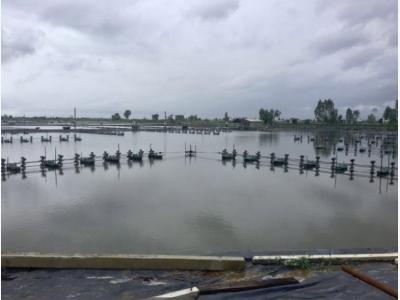Shrimp
Aquamimicry: A revolutionary concept for shrimp farming
Technology has been met with success worldwide by balancing natural plankton
- Preconditioning is crucial in aquafeed manufacturing
- A look at protease enzymes in crustacean nutrition
- Building a better shrimp nursery, part 3
- Building a better shrimp nursery, part 2
- Phytoplankton in aquaculture ponds: Friend or foe?
- Urgent appeal to control spread of the shrimp microsporidian
- The role of selective breeding and biosecurity in the prevention of disease
- Historic Emergence, Impact and Current Status of Shrimp Pathogens in Asia
Shrimp

Diseases of Crustaceans - Acute Hepatopancreatic Necrosis Disease (AHPND)
In the absence of identified biotic or abiotic cause(s) of the syndrome, the following disease signs can be used for presumptive (pond level) and confirmative

Early Mortality Syndrome (EMS) as new Emerging Threat in Shrimp Industry
Early Mortality Syndrome (EMS) as new Emerging Threat in Shrimp Industry

Determination of the infectious nature of the agent of acute hepatopancreatic necrosis
Determination of the infectious nature of the agent of acute hepatopancreatic necrosis syndrome affecting penaeid shrimp

Microsporidian Impacts Shrimp Production – Industry Efforts Address Control Not Eradication
Enterocytozoon hepatopenaei (EHP), a microsporidian parasite that has been widely found in Asia and other parts of the world

Enterocytozoon hepatopenaei sp. nov. (Microsporida: Enterocytozoonidae)
Enterocytozoon hepatopenaei sp. nov. (Microsporida: Enterocytozoonidae), a parasite of the black tiger shrimp Penaeus monodon (Decapoda: Penaeidae): Fine struct

The microsporidian Enterocytozoon hepatopenaei is not the cause of white feces syndrome
The microsporidian Enterocytozoon hepatopenaei is not the cause of white feces syndrome in whiteleg shrimp Penaeus (Litopenaeus) vannamei

Analyzing the hydrostability of shrimp feeds
Aquafeeds can lose nutrients rapidly after immersion, so it is important that feeds have adequate stability and attractability after immersion in water

Rotifers and diatoms aid shrimp biofloc nurseries
In shrimp farming systems, the microbial community plays an important role in recycling nutrients, decreasing the anoxic zones in ponds

The complex principles of redox measurement
During the past few years, several aquaculturists have asked me about the use and significance of the oxidation-reduction potential – often referred to as ORP

The importance of water analysis in aquaculture
Water analysis is becoming common in production aquaculture. At many production facilities, managers measure a variety of water quality variables

Calcium and magnesium use in aquaculture
Concentrations of calcium and magnesium are seldom measured in waters for aquaculture, but total hardness is determined rather often.

Understanding the oxygen demand of aquafeeds
Feed allows a great increase in the amount of aquaculture production possible in a given volume of water. But feed also results in an oxygen demand
